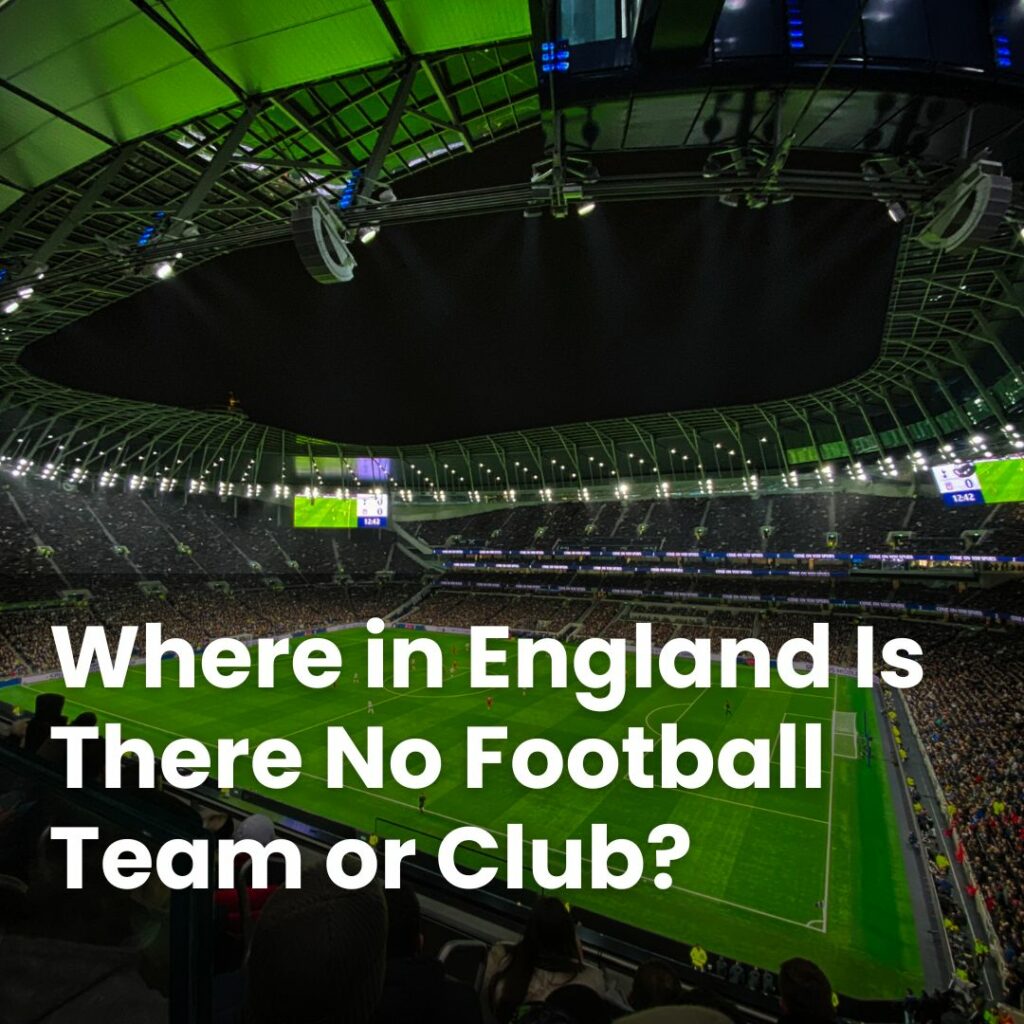Football sits at the heart of many English communities, yet there are areas where something seems to be missing. In a country where the game often shapes daily life, some places don’t have a team of their own.
This blog post explores where those spaces are, how they came to be, and what everyday football life looks like without a local club badge. It also considers how new teams might one day take shape in these locations.
Read on to learn more.
Which Places in England Do Not Have a Football Team?
Across England, clubs can be found at every level—from the elite of the professional divisions to grassroots outfits run by locals. Still, there are corners of the country where no formal team exists. This tends to happen where the population is thinner or where other factors limit the emergence of a club.
Rutland is often mentioned in these conversations. Some areas within regions like the Lake District, Northumberland, and Cornwall include settlements that don’t have a club competing in recognised competitions. In newly developed or rapidly growing residential areas, the community might not yet have a side to rally behind, depending instead on a neighbouring town.
Larger towns typically have at least one representative side. But in places just outside major football cities, smaller communities sometimes end up looking beyond their own postcodes when it comes to supporting or playing the game.
Even where no official club exists, activity often continues in other forms. Local groups, informal matches, and weekend football are common—just outside the spotlight of the national system.
So, what stops a club from forming in the first place?
Why Do Some Towns and Cities Lack a Football Club?
When you look closer at areas without a team, several themes emerge.
Smaller communities may find it difficult to pull together enough people to maintain teams for all ages. Organising fixtures, coaching, and handling the admin can stretch a small pool of volunteers.
Then there’s the matter of physical space. A football club needs more than just a ball and a group of players. Pitches, changing rooms, and equipment all play a role. If a side begins to climb, the demands increase: things like floodlights, fencing, and spectator areas might become necessary.
But there’s more to it than size or facilities alone. In some places, attention is drawn elsewhere. Other sports might dominate the local calendar, or community facilities may already be committed to different uses.
Another factor comes down to geography. Where a popular club is already well-established nearby, many residents naturally drift towards that team. It creates a following, but doesn’t always create the conditions for something new to emerge locally.
In some cases, clubs were once there, but aren’t anymore. Mergers, closures, or relocations can leave a gap. Rebuilding from that point is rarely quick. It takes more than enthusiasm to re-establish the structures that once supported a team.
All of these influences overlap in different ways. That’s why two places of similar size might have completely different experiences with the game.
See Our Top-Rated Online Casinos
Find the best online casino bonuses, read reviews from real players & discover brand new casinos with our list of recommended sites
Places in England Without a Football Team
Because club affiliation can shift each season, there’s no fixed register of areas without representation. However, certain locations tend to come up regularly when the question is raised.
Rutland, England’s smallest county, is a consistent reference point. Its towns and villages do not host a team in the professional structure. Similarly, parts of Cumbria and Cornwall contain communities too small to support a formal side beyond casual games or school matches.
In and around large cities, some recently built suburbs or outer districts lean towards older, neighbouring clubs instead of founding their own. It’s not unusual for these places to lack a senior badge, even if football is played regularly by residents.
Where that’s the case, what does the football experience look like on the ground?
How Do Local Communities Follow Football Without a Club?
People stay connected to the game in ways that fit their setting. Some travel to watch nearby teams in person, while others keep up through screens, broadcasts, and online commentary.
Community spaces often take on new meaning—pubs, village halls, or local venues become matchday hubs, where people gather to follow the action together.
Within the community itself, football still finds its place. Schools hold friendly games, while youth clubs and leisure centres host training and small tournaments. It’s common for players to commute to join clubs further afield, arranging transport with teammates or adapting their schedules to make it work.
The reach of national competitions ensures the game never feels distant. Local conversations often reflect a wide mix of allegiances—with shirts from top-tier teams appearing on the same street, even in places without a side of their own.
So, while the structure may look different, football remains woven into local life.
But could new clubs still take shape in these areas?
Are New Football Clubs Likely to Be Formed in These Areas?
New clubs can, and do, emerge, though not overnight. The potential depends on a few key factors, some of which develop gradually over time.
One of the first is sheer numbers. As an area grows, so does the possibility of forming consistent squads, especially if youth teams and community groups begin to build momentum.
Informal teams are often the starting point. With the right conditions, they can formalise, joining regional leagues and taking on fixtures. But for that step to be taken, certain building blocks need to be in place.
Space and funding play a huge part. Council support, business sponsorships or community-led fundraising can open the door to pitches and equipment. Getting coaches, transport and organisers involved helps keep things running smoothly once matches begin.
In some cases, supporters take on more than just cheering from the sidelines. Community-run clubs, where members share roles and responsibilities, have grown in number and provide an alternative route forward.
That said, not every area is positioned to make that leap. If transport is limited or resources are stretched, the focus may stay on informal football: the kickabouts, leagues and group training that remain central in many communities.
And if you choose to bet on football, use licensed operators and set clear limits.
While most of England has a club flying the flag locally, some places do not. In those locations, the game doesn’t vanish. It just shifts into a different form, one shaped by the people who keep it going until something new can grow.



